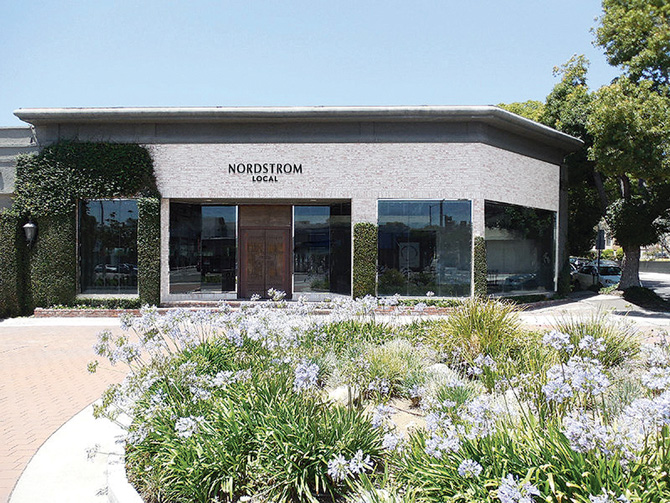
The latest shift for brick-and-mortar retail in the age of ecommerce?
Increasing numbers of stores are replacing traditional registers with smartphones to ring up sales, according to a new study on retail and its real estate by downtown-based commercial real estate firm CBRE Group Inc.
Many retailers are leaning more toward product introductions and demonstrations and less toward on-the-spot sales. That often means using physical locations to showcase merchandise and allow customers to experience products first-hand, according to the report.
Prominent local examples include Wisconsin-based bathroom fixture manufacturer Kohler Co.’s recent selection of West Hollywood for the second U.S. location of a new concept called the Kohler Experience Center. The center gives customers a chance try out high-tech showers and touch screen controlled toilets.
Seattle-based department store chain Nordstrom Inc. also chose West Hollywood as the site of its first Nordstrom Local concept, which debuted in October. The new concept carries no inventory in the 3,000-square-foot building, and instead uses the space to offer customers free appointments with personal stylists, and a place to get clothing altered and to receive manicures.
Nordstrom.com customers can pick up items they’ve reserved online the same day at Nordstrom Local, while users of the online clothing subscription service Trunk Club, which Nordstrom acquired in 2014, can pick up or return items at the West Hollywood location.
Wage Bump
Airline catering employees at Los Angeles International Airport will get regularly scheduled wage increases starting next July as a result of legislation unanimously approved by the L.A. City Council this month.
The City Council said it wanted the employees’ wages to align more with the city’s minimum wage, which is set to increase to $13.25 an hour in July from $12 an hour for companies which employ at least 26 people.
Airline caterers that provide health insurance must pay a minimum of $13.75 per hour as of July 1, which will rise to $17 an hour in 2021.
The recent vote, which amended current legislation, closed a loophole that had kept catering employees from earning a living wage, said the Los Angeles Alliance for a New Economy, a labor advocacy organization, in a statement, adding that thousands of workers would be affected.
Trejo’s Tacos Takes Off
The fast-casual Mexican restaurant chain recently launched by actor Danny Trejo will at Terminal 1 in Los Angeles International Airport next year, according to Eater LA.
Trejo and his partners have opened several new Trejo’s Tacos locations this year, including the new USC Village, Woodland Hills, and Hollywood, bringing the total units to at least six since the group opened its first restaurant on La Brea in 2016.
Eater LA reports that several other concepts, including downtown’s Urth Caffe, also are scheduled to open in the terminal next year.
Preservations in Jeopardy
There could be some significant fallout locally if a federal tax credit used by developers who restore historic structures is eliminated or reduced under the federal tax bill currently working its way through Washington, D.C.
The LA Conservancy and other preservationist organizations say that the credit, which allows developers to claim a credit equal to 20 percent of hard construction costs, has been essential in preserving many buildings of historic significance.
A big local example: the 1.1 million-square-foot Hamburgers/May Co. Department Store at 8th Street and Broadway, which New York owner Waterbridge Capital is in the process of converting to a hotel and a market.
It’s billed as the largest historic rehabilitation project in the state’s history, according to the Conservancy, at an estimated cost of $215 million.
The version of the tax bill the U.S. House of Representatives passed last month gets rid of the credit, while the U.S. Senate version’s version reportedly spreads it out over five years.
The tax credit goes back to 1981 and has more recently helped attract a wave of developers to convert local historic buildings into boutique hotels and other uses, especially downtown, said LA Conservancy Chief Executive Linda Dishman.
It also brings in tax revenue, Dishman said, pointing to a recent study by Rutgers, The State University of New Jersey that showed the U.S. Treasury received $1.18 on average for every dollar claimed under the credit.
Caroline Anderson is a staff reporter. She can be reached at [email protected] or 323-556-8329.
